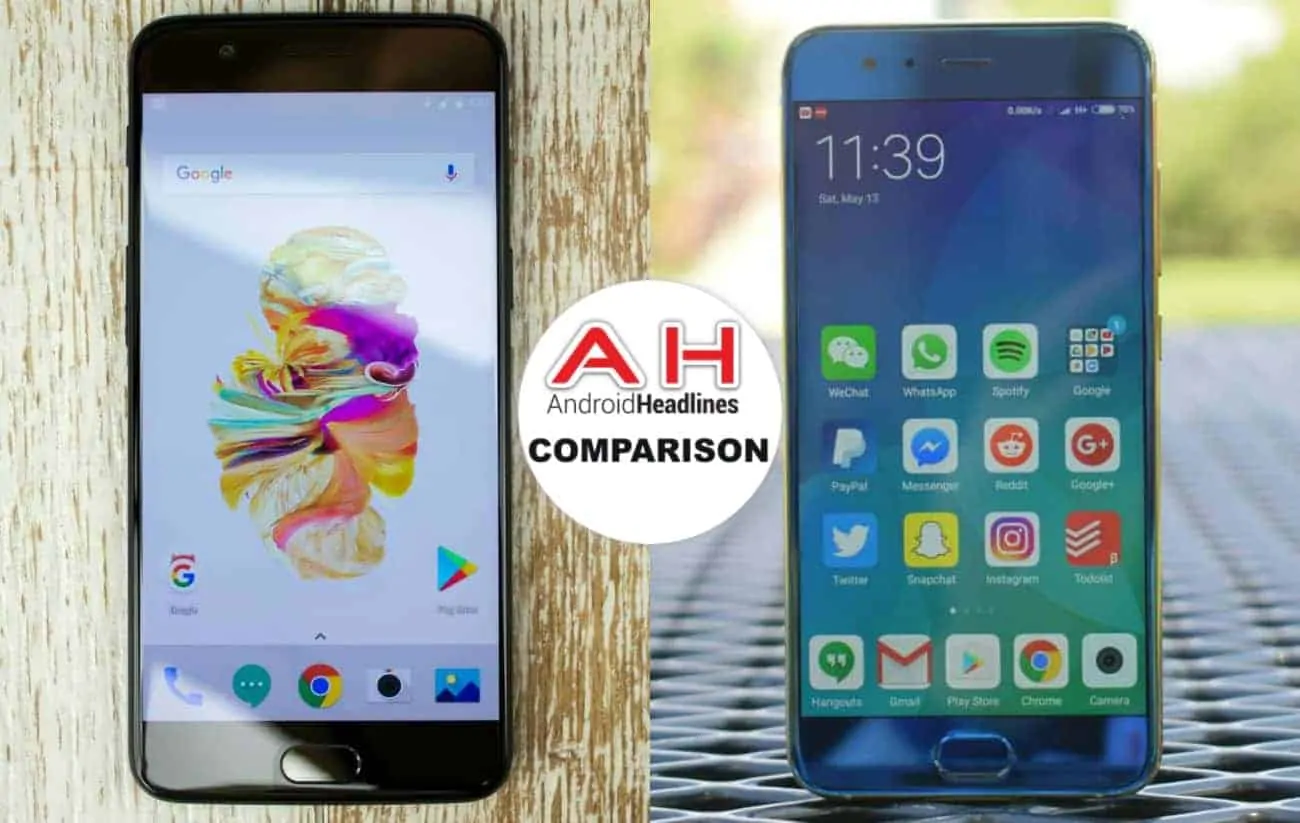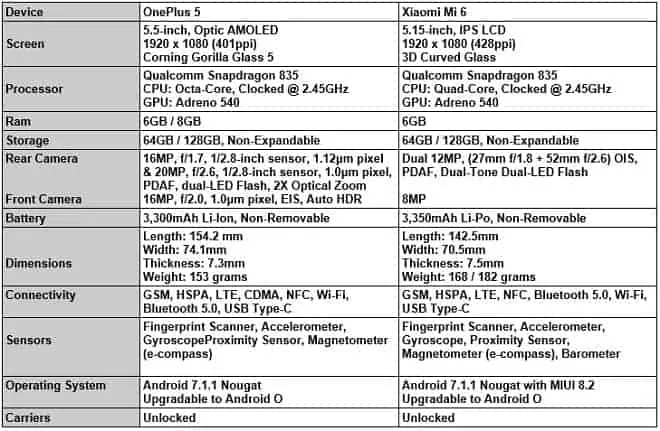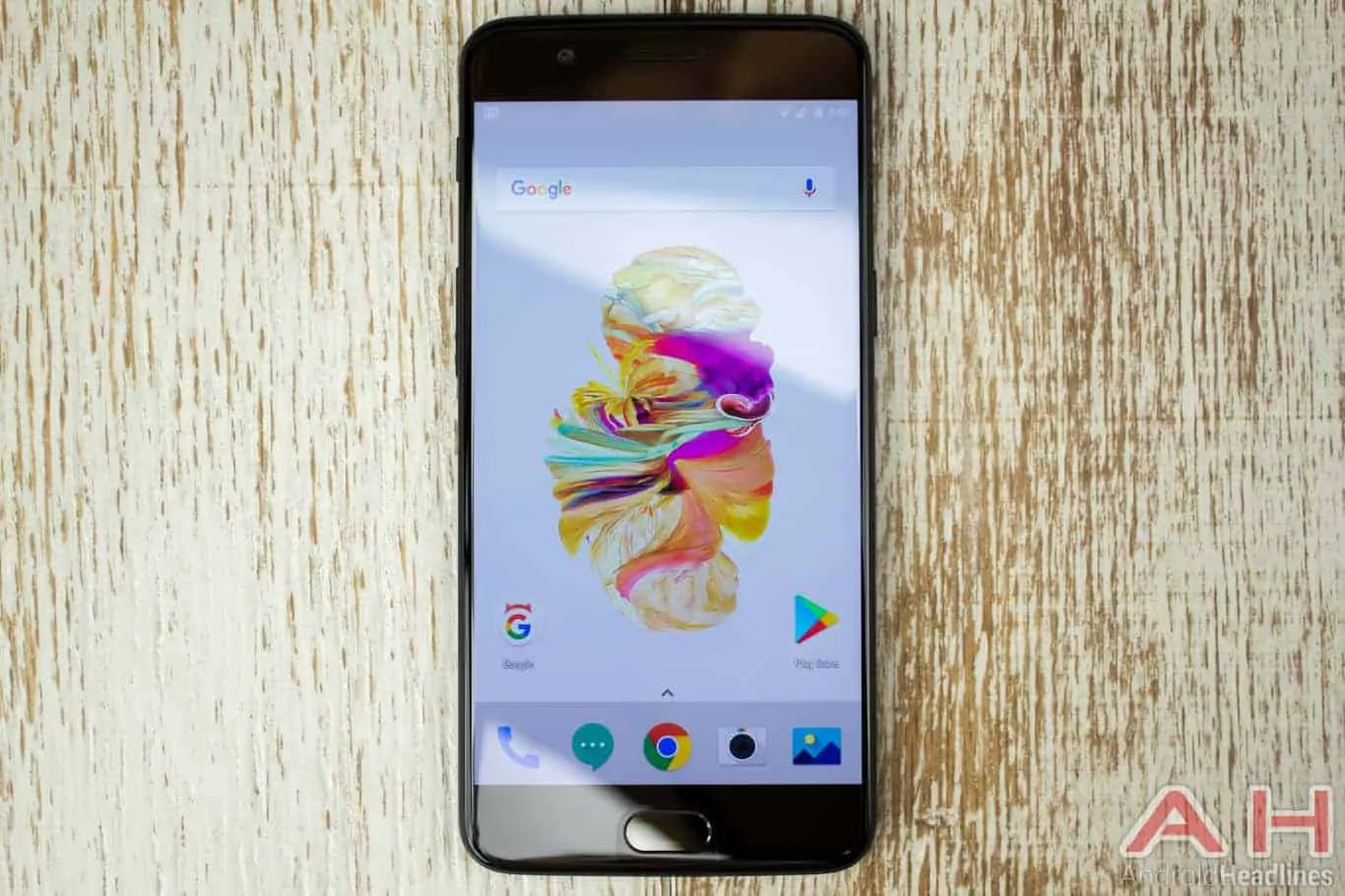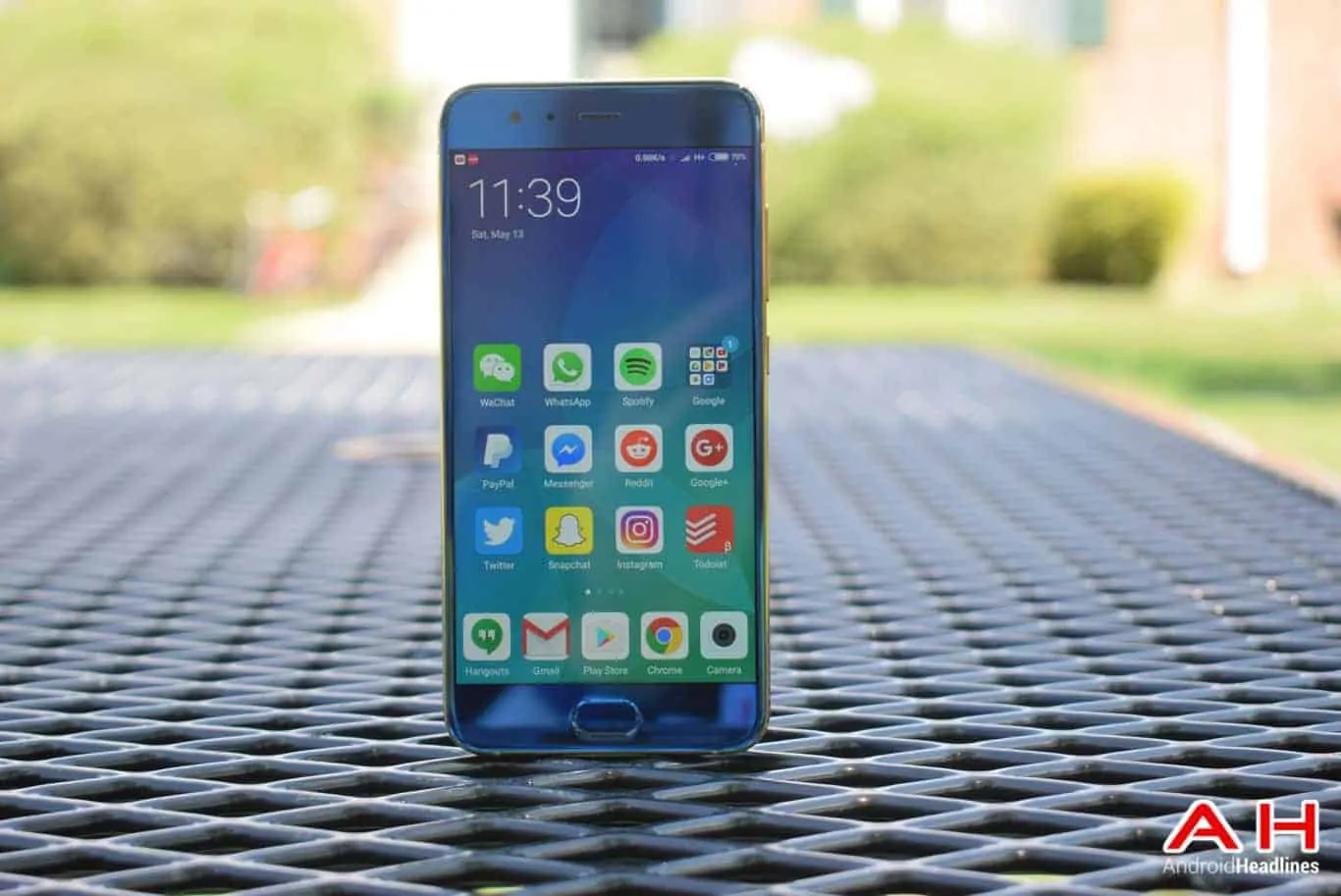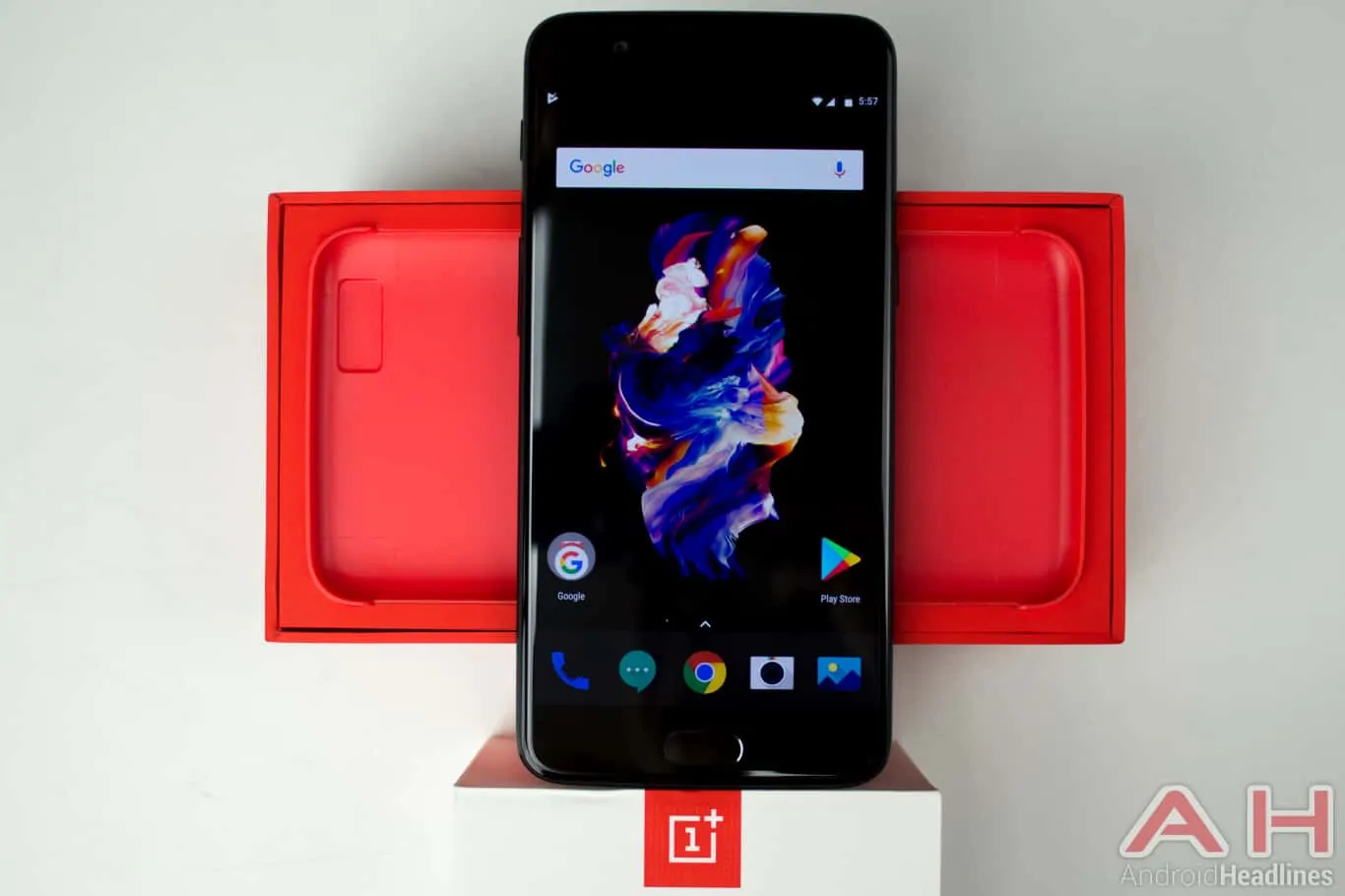Introduction
Today we’ll compare two smartphones from two relatively-new Chinese tech companies that have both gained a cult following since their inception earlier this decade. The killer combination of premium hardware, innovative software and pocket-friendly price-tags have ensured that the Beijing-headquartered Xiaomi and Shenzhen-headquartered OnePlus have both got a massive fan-base with a lot of developmental activities around their phones, making the devices exceptionally desirable for geeks, tech enthusiasts and bargain hunters alike. That being the case, we’ve decided to pit the OnePlus 5 against the Xiaomi Mi 6 today in a sort of a ‘Battle of the Budget Flagships’ to see which one comes out on top. So without any further ado, let’s get right to it!
Specifications
OnePlus 5
Unsurprisingly, the OnePlus 5 follows the same recipe as the OnePlus 3T and other OnePlus devices before it. After all, if it ain’t broke, why fix it, right? So with the latest OnePlus flagship, you get premium hardware and innovative, feature-rich software, all wrapped up in an aesthetically pleasing package, albeit, one that looks suspiciously similar to the iPhone 7 Plus. However, for what it’s worth, it’s difficult to argue against the price-performance ration of the device, which is why millions are choosing to overlook the obvious similarities with Apple’s current flagship. As far as the rest of OnePlus 5’s design cues are concerned, the device has a physical home button that comes with an integrated fingerprint scanner, and keeping in line with the latest trend of vanishing bezels, it also gets rid of any unnecessary plastic or metal on the two sides, giving it a very modern look. The front-facing camera, earpiece and proximity sensors are placed on the top, the volume rocker and the trademark OnePlus ‘Alert Slider’ sit on the left edge, and the power key can be found on the right.
In terms of hardware, the OnePlus 5 features a 5.5-inch 1080p Optic AMOLED screen that’s protected by Corning Gorilla Glass 5. It is powered by the same Qualcomm Snapdragon 835 SoC that comes with a 64-bit CPU with eight custom Kryo 280 cores, four of which are clocked at 2.45GHz and four others at 1.9GHz. An Adreno 540 GPU takes care of all the graphics processing needs. The OnePlus 5 is offered in two different variants – a base version with 6GB of RAM and 64GB of internal storage, and a more premium model that costs $60 extra, but offers 8GB of RAM and 128GB of built-in storage. The device carries a 3,300mAh battery and runs Android 7.1.1 Nougat in the form of Oxygen OS.
On the imaging side of things, the OnePlus 5 sports a rear-facing dual-camera module with gyro-based EIS and a dual-LED flash. While one of the cameras incorporates a 16-megapixel Sony sensor with an f/1.7 lens, the other one comes with a 20-megapixel sensor that’s paired with an f/2.6 telephoto lens. The front-facing camera on the OnePlus 5 also comes with a 16-megapixel sensor, but with 1.0μm pixels and a lens that has an f/2.0 aperture. As far as videos are concerned, while the front-facing camera can shoot 1080p videos at 30fps, the rear-facing module can actually shoot 4K videos at 30fps and full HD videos at up to 120fps. On the software side of things, the device comes with Android 7.1 Nougat pre-installed in the form of Oxygen OS.
The OnePlus 5 also comes with a long list of connectivity features that include Wi-Fi 802.11 a/b/g/n/ac, Wi-Fi Direct, DLNA and Bluetooth 5.0, while cellular connectivity includes support for as many as 34 frequency bands. The device also supports GPS with A-GPS and GLONASS, and there’s also an NFC chip that should make it compatible with most mobile payment systems including Android Pay. Unlike many of its competitors this year, the OnePlus 5 still ships with the 3.5mm audio port, although, there’s also a USB Type-C port for charging and data syncing. The handset weighs 153 grams and, measures 152.2mm in length, 74.1mm in width and 7.3mm in thickness.
Xiaomi Mi 6
Xiaomi launched the Mi 6 earlier this year at an event in Beijing, China. The device follows the same design aesthetic as seen in the Mi 5, and comes with an all-glass build wrapped around a sturdy stainless steel frame. The device has received praise from various quarters for its design, the battery life and camera quality, and once you use it for a while, you’ll know exactly why. On the back, the device has a 3D glass panel curved on all four sides, while on the front, it features a standard 2.5D curved glass display. Both panels are protected by Corning Gorilla Glass 5, which safeguards them from scratches and minor impacts. One the back, the twin cameras come with rounded metal rims on the standard version, while on the pricier Ceramic Edition, those are made out of 18-karat gold. The device also comes with splash resistance, although, it isn’t fully waterproof.
While design is definitely one of the highlights of the Xiaomi Mi 6, the device also comes with some really impressive hardware under the hood. It features a 5.15-inch 1080p IPS LCD display and is powered by the same Qualcomm Snapdragon 835 SoC that powers its adversary in today’s comparison. The device packs 6GB of RAM, and is offered in two different storage options – one with 64GB of internal storage, and another, with 128GB of built-in storage. There is, however, no expansion slot in the device, so you cannot expand the native storage with microSD cards.
One of the major highlights of the Mi 6 is the dual 12-megapixel camera module on its back. While one of the two cameras has a wide-angle Sony IMX386 sensor with 1.25µm pixels, paired with an f/1.8 lens with 27mm focal length, the other one comes with 1µm pixels and is mated to a telephoto lens with 56mm focal length and an f/2.6 aperture. Local connectivity features include dual-band Wi-Fi 802.11 a/b/g/n/ac, Wi-Fi Direct, DLNA and Bluetooth 5.0, while cellular connectivity includes support for GSM, HSPA, LTE, CDMA and EVDO technologies. The device also supports GPS with A-GPS and GLONASS, while an NFC chip ensures you can use it for Android Pay.
The Xiaomi Mi 6 also ships with a USB Type-C port for charging and data syncing, but like many of its peers, gets rid of the 3.5mm audio port. However, Xiaomi does include a 3.5mm analog adapter with the retail box to ensure compatibility with older headphones and audio systems. The Mi 6 carries a non-removable 3,350mAh battery and ships with Android 7.1.1 Nougat in the form of MIUI 8, although, the MIUI 9 update is due to be rolled out fairly soon. The device measures 145.2mm in length, 70.5mm in width and 7.5mm in thickness. While the standard version weighs 168 grams, the ceramic version tilts the scales at 153 grams.
And The Winner Is …
The Final Word
On paper, this should have been an incredibly tough choice, but in reality, it wasn’t. That’s because, while the Mi 6 struggles to offer full network support for many of the carriers in the U.S. and Europe, the OnePlus 5 has no such issues with support for a whopping 34 frequency bands to ensure compatibility with a large number of carriers around the world. It is a bit strange to see Xiaomi still struggling to expand beyond a few markets more than seven years after its inception in April 2010. OnePlus, on the other hand, is a worldwide brand now, and is officially present in dozens of countries around the world, so it is only natural that its devices will have greater compatibility compared to its competitor in today’s contest. However, if you live in places like China and India where Xiaomi does offer full network support, the choice becomes murkier, and comes down to your preference for software and screen-size. Both devices have huge developer support, so themes, custom ROMs etc. shouldn’t be a problem with either, so if you like all the added features, customization and unique look and feel of MIUI, the Mi 6 definitely is a great choice for you, provided, you don’t mind the puny 5.15-inch screen in an era when mainstream devices are already starting to creep up to the 6-inch mark and even exceeding it at times (here’s looking at the Galaxy S8 Plus).
Buy The OnePlus 5 Buy The Xiaomi Mi 6

